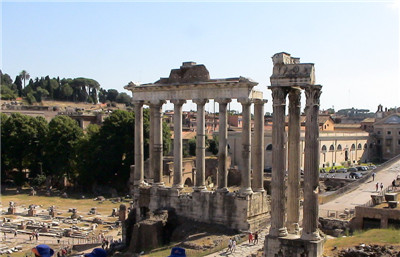1. The Roman Empire, circa 100 AD: 25 to 30% of global output
1. 羅馬帝國,公元100年前后:占全球經濟產出總量的25%-30%
Rome was the distant descendant of the very first agricultural revolution, which took place in modern-day Iraq. Rome rose quickly from a small republic to a dominant global empire in a matter of centuries. It cemented its status as a superpower in a series of wars, known as the Punic Wars, with Ancient Carthage. These conflicts gave Rome complete dominance of the Mediterranean Sea, a body of water that enabled trade to flow easily from the economically vibrant areas of the empire, like the city of Rome and Egypt.
羅馬是全球首次農業革命(發生在如今的伊拉克境內)的間接產物。在短短數百年的時間里,羅馬就從一個小小的共和國,迅速崛起成一個舉足輕重的全球帝國。通過與古迦太基(Ancient Carthage)進行的一系列戰爭——史稱“布匿戰爭”(Punic Wars),羅馬鞏固了自己的超級大國地位。這些沖突讓羅馬獲得了地中海地區的絕對統治,這處水域讓羅馬城和埃及等充滿經濟活力的地區可以方便的進行對外貿易。

As economists today know, trade is a vital ingredient for economic growth, and the Romans were better at it during their height than anybody else. There is also evidence that the Romans had a sophisticated financial system that made extensive use of bank notes and other forms of credit, which enabled traders to forgo hauling precious metals across long distances.
當今的經濟學家們都知道,貿易是經濟增長的一大要素,而鼎盛時期的羅馬人比任何人都擅長貿易。此外,有證據表明,羅馬人還擁有一套完善的金融體系,廣泛使用銀行票據及其他形式的信貸商品,讓商人不用再遠距離運送貴金屬。











